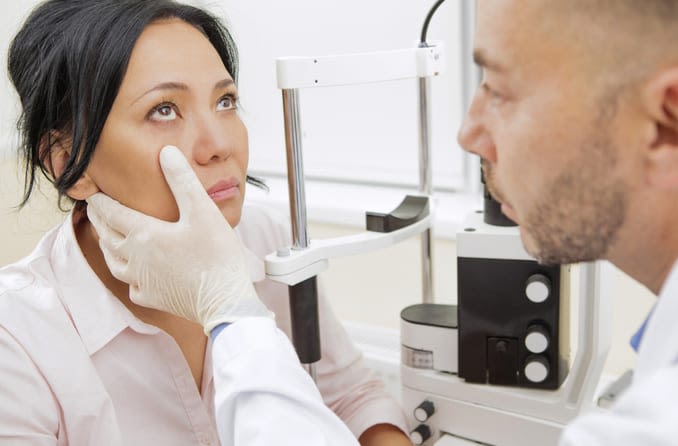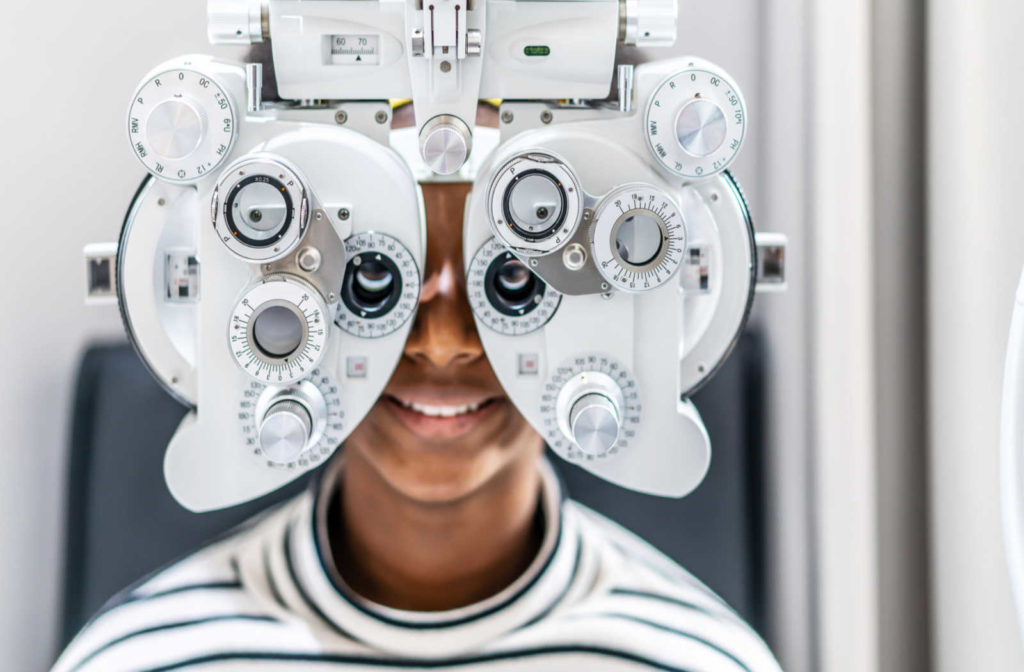Exploring the Most Current Technological Innovations in Optometry and What They Mean for Eye Doctors
From the accuracy of Optical Coherence Tomography to the nuanced understandings offered by AI-driven diagnostic devices, these technologies are establishing new standards in individual evaluation and therapy. As these developments penetrate the practice, optometrists are faced with the difficulty of embracing these devices to improve individual outcomes.
Advancements in Diagnostic Tools
Advancing the field of optometry, technologies in analysis tools have actually transformed the method eye care professionals analyze and identify aesthetic impairments and eye conditions. The previous decade has witnessed substantial technological improvements, allowing even more exact and thorough assessments.
An additional secret development is the intro of sophisticated corneal topography systems, which map the surface area curvature of the cornea with precision. These tools are specifically beneficial for suitable contact lenses and identifying corneal disorders. Digital retinal imaging has actually changed traditional ophthalmoscopy, using in-depth, breathtaking sights of the retina that assist in complete aesthetic assessments.
The advancement of wavefront aberrometry has actually also been essential, allowing the analysis of refractive mistakes with unparalleled precision (Optometrist Chino). This innovation helps in customizing rehabilitative lenses and boosting medical results for refractive surgeries. Jointly, these diagnostic improvements encourage eye doctors to supply superior patient treatment, making sure early intervention and customized therapy methods, eventually improving visual wellness results
AI in Patient Management
Building on the structure of innovative diagnostic devices, the unification of man-made intelligence (AI) in patient administration stands for a transformative jump for optometry. AI systems are increasingly employed to improve performance, precision, and customization in patient treatment.
Moreover, AI-driven systems facilitate streamlined individual communications and management procedures. Automated organizing, digital consultations, and individualized follow-up strategies not only enhance person fulfillment yet additionally maximize time monitoring for experts. These systems can triage people based on the urgency of their problems, guaranteeing that those in essential need get timely attention.
Moreover, AI enhances decision-making by giving eye doctors with evidence-based recommendations and treatment pathways. By integrating data from electronic wellness records, AI tools supply insights that educate clinical choices, minimizing the danger of mistakes and enhancing individual outcomes. As AI remains to evolve, its duty in person management will likely expand, improving the landscape of optometric care.
Developments in Retinal Imaging
In the world of optometry, retinal imaging has actually observed remarkable technical innovations that are improving diagnostic abilities and person care. Developments such as Optical Coherence Tomography (OCT) and fundus digital photography have actually revolutionized exactly how eye doctors imagine and examine the retina.
Boosted imaging modalities like OCT angiography are more refining diagnostic precision. This non-invasive method maps blood flow in the retina, supplying important insights right into vascular health and wellness without the need for dye injections. Furthermore, flexible optics technology is being incorporated into retinal imaging systems to fix eye aberrations, delivering extraordinary photo clearness. Such advancements assist in the identification of minute retinal modifications that could signify disease progression.
Furthermore, improvements in man-made knowledge are increasing retinal imaging by making it possible for automatic analysis of huge datasets. These systems help optometrists in identifying patterns a measure of pathology, thus enhancing diagnostic accuracy and performance. Collectively, these technologies are transforming retinal imaging into a foundation of modern eye treatment, improving outcomes and broadening healing opportunities.
Teleoptometry's Expanding Function
Teleoptometry is significantly ending up being a crucial element of eye treatment, driven by developments in digital interaction and analysis tools. As optometry welcomes electronic makeover, teleoptometry assists in remote assessments, allowing eye doctors to Read More Here extend their solutions beyond conventional boundaries. This is especially useful in country and underserved locations where accessibility to specialized eye care is typically restricted. By leveraging high-resolution video conferencing and advanced retinal imaging, optometrists can carry out comprehensive eye tests from afar, making certain prompt diagnosis and therapy.
The assimilation of artificial knowledge (AI) more boosts teleoptometry, making it possible for the analysis of aesthetic data and aiding in the discovery of eye conditions such as glaucoma and diabetic person retinopathy. AI-powered formulas can quickly analyze complex imaging data, supplying eye doctors with beneficial insights that boost scientific decision-making.
Additionally, teleoptometry supports connection of care via seamless assimilation with digital health and wellness documents (EHRs), enabling optometrists to preserve comprehensive individual histories. This makes sure that patients obtain regular and tailored care even when consulting with various practitioners.
Despite these advantages, difficulties remain, consisting of guaranteeing information security and handling patient assumptions. Nonetheless, teleoptometry represents a substantial stride in the direction of even more obtainable, efficient, and patient-centered eye treatment. As modern technology develops, its role is positioned to increase even more.

Future Patterns in Eye Care
A myriad of cutting-edge patterns is readied to reshape the future of eye treatment, driven by technological advancements and the evolving requirements of individuals. One substantial pattern is the combination of fabricated knowledge (AI) in diagnostics, which guarantees to enhance the accuracy and effectiveness of eye assessments. AI algorithms can analyze large amounts of data from retinal images, possibly identifying problems like diabetic retinopathy and glaucoma earlier than standard approaches.
Furthermore, individualized medication is obtaining traction in optometry, with hereditary testing educating customized therapy plans. This approach intends to maximize client outcomes by customizing interventions to private hereditary profiles. Wearable innovation, such as smart call lenses, is also imminent, offering real-time monitoring of intraocular stress or glucose degrees, hence providing continuous understandings right into systemic and ocular wellness.
The adoption of augmented reality (AR) and virtual truth (VR) in training and person education is an additional emerging pattern. These technologies offer immersive experiences that can boost understanding and abilities both for eye doctors and clients. As these fads develop, optometrists must remain abreast of technological innovations to supply cutting-edge care, guaranteeing better individual end results and fulfillment in the check out here vibrant landscape of eye treatment.
Final Thought

Collectively, these analysis advancements equip optometrists to deliver remarkable patient treatment, ensuring early intervention and customized treatment approaches, ultimately boosting aesthetic wellness results.

As these innovations continue to progress, eye doctors should adapt and integrate them right into method, ultimately optimizing operations effectiveness and elevating the requirement of eye treatment provided to clients.